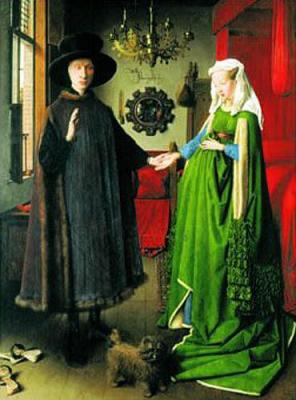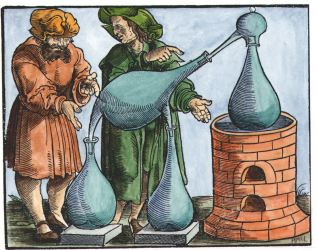| Author | Post |
|---|
Paul Ferguson
Member

| Joined: | Fri Feb 15th, 2008 |
| Location: | |
| Posts: | 1538 |
| Status: |
Offline
|
|
Posted: Tue Sep 21st, 2010 05:21 am |
|
Once again, hardly new, but I am doing a course on the Northern Renaissance and came across this reference to alchemy in Gage's massive tome:
http://books.google.com/books?id=oq_GtjmoTNgC&pg=PA142&dq=john+gage+eyck+amber&hl=fr&ei=uzGYTLmEM8-L4QbC5amGAQ&sa=X&oi=book_result&ct=result&resnum=1&ved=0CCcQ6AEwAA#v=onepage&q&f=falseAttached Image (viewed 13899 times):

|
Alan Pritchard
Guest
| Joined: | |
| Location: | |
| Posts: | |
| Status: |
Offline
|
|
Posted: Wed Sep 22nd, 2010 04:05 pm |
|
Thanks, Paul.
I had the book on file, but the whole section on The Peacock's Tail is interesting. Google books reference is helpful as well.
|
adammclean
Member

| Joined: | Fri Sep 14th, 2007 |
| Location: | United Kingdom |
| Posts: | 606 |
| Status: |
Offline
|
|
Posted: Wed Sep 22nd, 2010 05:13 pm |
|
The alchemical van Eyck seems, to me, to be a stretch too far. How wonderful it would be if this master of painting was indeed creating alchemical emblems in his artwork. I remember reading some pieces from a few decades ago in which some writers tried to make out that van Eyck used alchemy in the actual fabrication of his pigments. I wasn't convinced by that either.
People try and read so much into this early masterful oil painting. Even David Hockney tried to demonstrate that it must have involved an early use of optical techniques to create the perspective. He then made a fool of himself by attempting to use a camera obscura to draw a candelabrum similar to that in the Arnolfini from life. It was pathetically naive. Why cannot one just accept that Jan van Eyck had the skill to draw this in correct perspective?
Jan van Eyck must have given most of the hours in his days to solving the problems of painting. An artist looking at the Arnolfini, will realise that much of van Eycks painting arises from his delight is showing what he can achieve, in modelling forms, and capturing the textures of cloth and surfaces. It must have been a wonderful moment for him when he realised he could depict the foreground scene in a convex mirror in the background. Showing off ? Of course he was, but he was entitled to do so. I don't see the alchemy in this work, only a delight in being able to paint the candelabrum in that way.
|
Paul Ferguson
Member

| Joined: | Fri Feb 15th, 2008 |
| Location: | |
| Posts: | 1538 |
| Status: |
Offline
|
|
Posted: Wed Sep 22nd, 2010 10:25 pm |
|
adammclean wrote:
The alchemical van Eyck seems, to me, to be a stretch too far. How wonderful it would be if this master of painting was indeed creating alchemical emblems in his artwork. I remember reading some pieces from a few decades ago in which some writers tried to make out that van Eyck used alchemy in the actual fabrication of his pigments. I wasn't convinced by that either.
People try and read so much into this early masterful oil painting. Even David Hockney tried to demonstrate that it must have involved an early use of optical techniques to create the perspective. He then made a fool of himself by attempting to use a camera obscura to draw a candelabrum similar to that in the Arnolfini from life. It was pathetically naive. Why cannot one just accept that Jan van Eyck had the skill to draw this in correct perspective?
Jan van Eyck must have given most of the hours in his days to solving the problems of painting. An artist looking at the Arnolfini, will realise that much of van Eycks painting arises from his delight is showing what he can achieve, in modelling forms, and capturing the textures of cloth and surfaces. It must have been a wonderful moment for him when he realised he could depict the foreground scene in a convex mirror in the background. Showing off ? Of course he was, but he was entitled to do so. I don't see the alchemy in this work, only a delight in being able to paint the candelabrum in that way.
I believe both Vasari and Karel van Mander say that van Eyck was an alchemist, and Philip the Good, van Eyck's patron, had an interest in alchemy and founded the Order of the Golden Fleece ( http://www.sunypress.edu/p-1584-the-golden-fleece-and-alchemy.aspx ), but this in itself proves nothing.
|
adammclean
Member

| Joined: | Fri Sep 14th, 2007 |
| Location: | United Kingdom |
| Posts: | 606 |
| Status: |
Offline
|
|
Posted: Wed Sep 22nd, 2010 11:00 pm |
|
Paul Ferguson wrote:
I believe both Vasari and Karel van Mander say that van Eyck was an alchemist, and Philip the Good, van Eyck's patron, had an interest in alchemy
I think that one thing we have learned over the past decades is that alchemy was not some obscure esoteric doctrine practised by secretive figures, but was part of the culture of those times. It can be no surprise that a cultured individual such as Jan van Eyck had some contact with alchemy, but there is no indication that this influenced or gave form to his paintings.
As someone with an interest in alchemy in cultural history it would delight me to find that Jan van Eyck had constructed his paintings with alchemical motifs, but I cannot see anything, only the honest striving of an artist to fully explore what could be represented in painting.
|
Paul Ferguson
Member

| Joined: | Fri Feb 15th, 2008 |
| Location: | |
| Posts: | 1538 |
| Status: |
Offline
|
|
Posted: Wed Sep 22nd, 2010 11:07 pm |
|
adammclean wrote:
Paul Ferguson wrote:
I believe both Vasari and Karel van Mander say that van Eyck was an alchemist, and Philip the Good, van Eyck's patron, had an interest in alchemy
I think that one thing we have learned over the past decades is that alchemy was not some obscure esoteric doctrine practised by secretive figures, but was part of the culture of those times. It can be no surprise that a cultured individual such as Jan van Eyck had some contact with alchemy, but there is no indication that this influenced or gave form to his paintings.
As someone with an interest in alchemy in cultural history it would delight me to find that Jan van Eyck had constructed his paintings with alchemical motifs, but I cannot see anything, only the honest striving of an artist to fully explore what could be represented in painting.
Even Coppens has difficulty finding anything alchemical in van Eyck's work:
http://www.philipcoppens.com/vaneyck.html
For the record anyway.
|
Paul Ferguson
Member

| Joined: | Fri Feb 15th, 2008 |
| Location: | |
| Posts: | 1538 |
| Status: |
Offline
|
|
Posted: Thu Sep 23rd, 2010 01:17 pm |
|
Paul Ferguson wrote:
adammclean wrote:
Paul Ferguson wrote:
I believe both Vasari and Karel van Mander say that van Eyck was an alchemist, and Philip the Good, van Eyck's patron, had an interest in alchemy
I think that one thing we have learned over the past decades is that alchemy was not some obscure esoteric doctrine practised by secretive figures, but was part of the culture of those times. It can be no surprise that a cultured individual such as Jan van Eyck had some contact with alchemy, but there is no indication that this influenced or gave form to his paintings.
As someone with an interest in alchemy in cultural history it would delight me to find that Jan van Eyck had constructed his paintings with alchemical motifs, but I cannot see anything, only the honest striving of an artist to fully explore what could be represented in painting.
Even Coppens has difficulty finding anything alchemical in van Eyck's work:
http://www.philipcoppens.com/vaneyck.html
For the record anyway.
Following on from the Coppens link, which I suppose we must file under 'pseudo-history', has anyone read anything by Marc Penninck (or Marc Penninck de Landas - he says he is a bastard son of the de Landas family and has therefore added their name to his)? I know he gives lectures, but I've googled like mad and cannot find anything he's written.
|

Current time is 09:41 am | |
|

